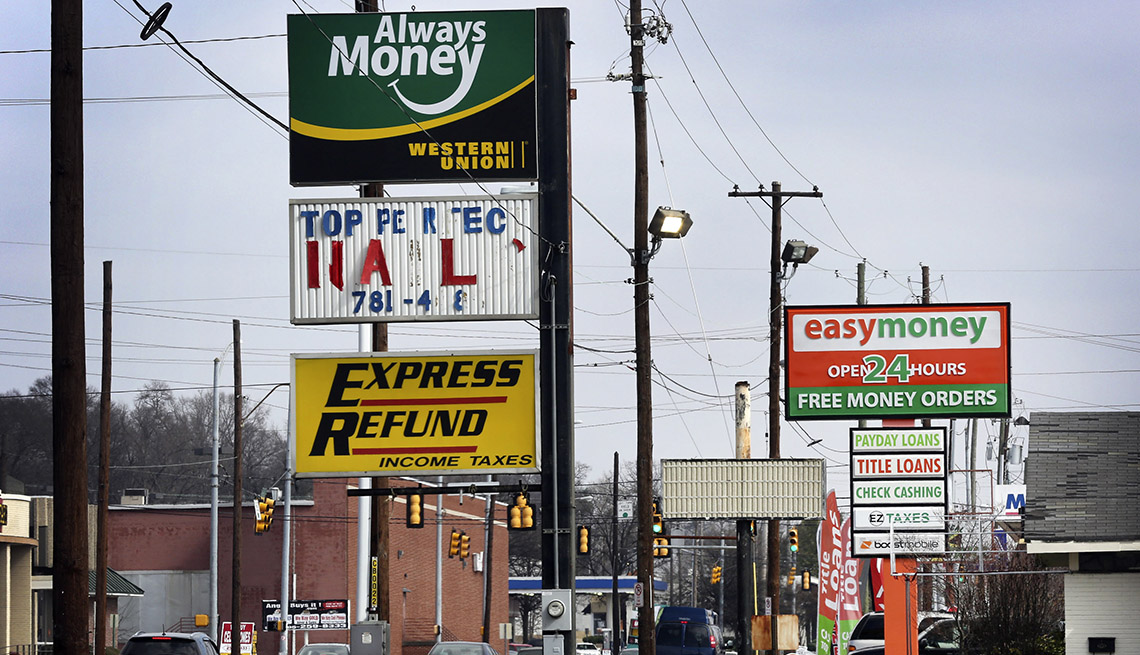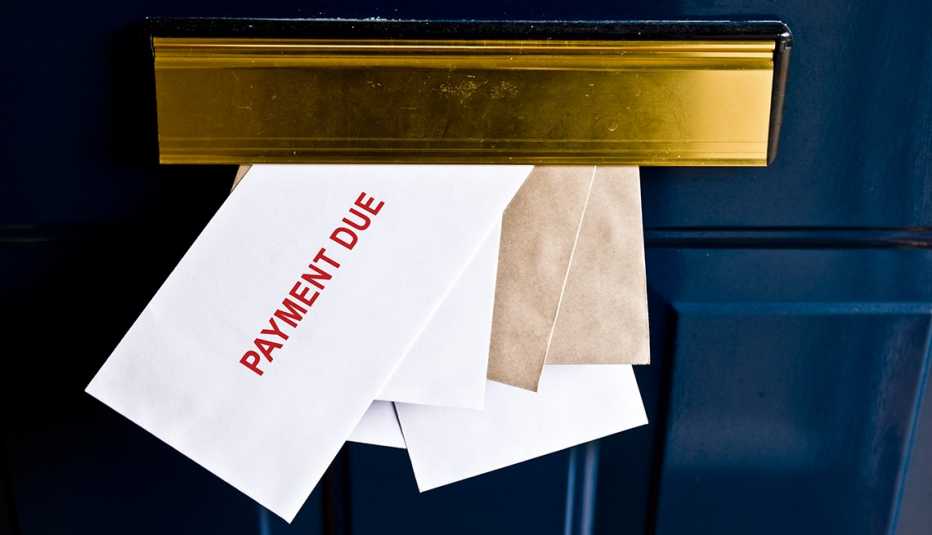Staying Fit
The downturn in the economy could push more Social Security beneficiaries to take out high-interest payday loans, running the risk of getting caught in a cycle of ever-increasing debt.
A payday loan is typically a short-term loan of less than $500 typically aimed at low-income individuals. Fees usually run between $10 and $30 for each $100 borrowed. If you borrowed $300, for example, you'd owe between $30 and $90 in fees. Borrowers write a check for the amount of the loan, plus fees, to the lender dated for their next payday. The lender cashes the check on the borrower's payday and collects their principal and fees.


AARP Membership— $12 for your first year when you sign up for Automatic Renewal
Get instant access to members-only products and hundreds of discounts, a free second membership, and a subscription to AARP the Magazine.
If you collect benefits from the Social Security Administration (SSA) and can verify your payments, you're typically eligible for a payday loan. Payday lenders welcome Social Security beneficiaries because, unlike part-time workers, their payments are stable and reliable. And for many people, including Social Security beneficiaries, the loans are fast and easy to get.
Convenience at a high cost
The convenience of payday loans comes with a high cost. A typical two-week payday loan with a fee of $15 per $100 borrowed equates to an annual percentage rate (APR) of almost 400 percent, according to the Consumer Financial Protection Bureau (CFPB). In contrast, the typical credit card has an APR of about 16 percent, according to Bankrate.com.
Some economists argue that payday loans can be a reasonable solution for short-term cash crunches, if you pay them off quickly. “The problem with these loans is when you pay off one loan and then you don't have enough money during the next pay period,” says Kimberly Blanton, who writes the Squared Away Blog for the Center for Retirement Research at Boston College. “And so you borrow more."
That's an expensive strategy. If in two weeks you can't afford to repay that $300 payday loan that came with $45 in fees, the borrower might suggest that you just pay the fees, rather than the principal of the loan. But by the next payday, you'd owe another $45 in fees plus the principal, meaning you'd now have paid $90 in just one month to borrow $300.
"The industry says, ‘Look, borrowers get to fix their car and go to work so they keep their jobs,” says Haydar Kurban, a professor of economics at Howard University. “The problem is someone who takes out 10, 12 loans a year. And the payday loan strategy is to land borrowers multiple times."
For recipients of Supplemental Security Income (SSI), a program run by SSA to support certain people with little or no income, there's an extra danger. A loan doesn't reduce your SSI benefit, but any funds you borrow and don't spend will count toward the $2,000 resource limit for an individual (or $3,000 for a couple) the next month. If the value of your resources is over the allowable limit at the beginning of the month, you cannot receive SSI for that month.



































































